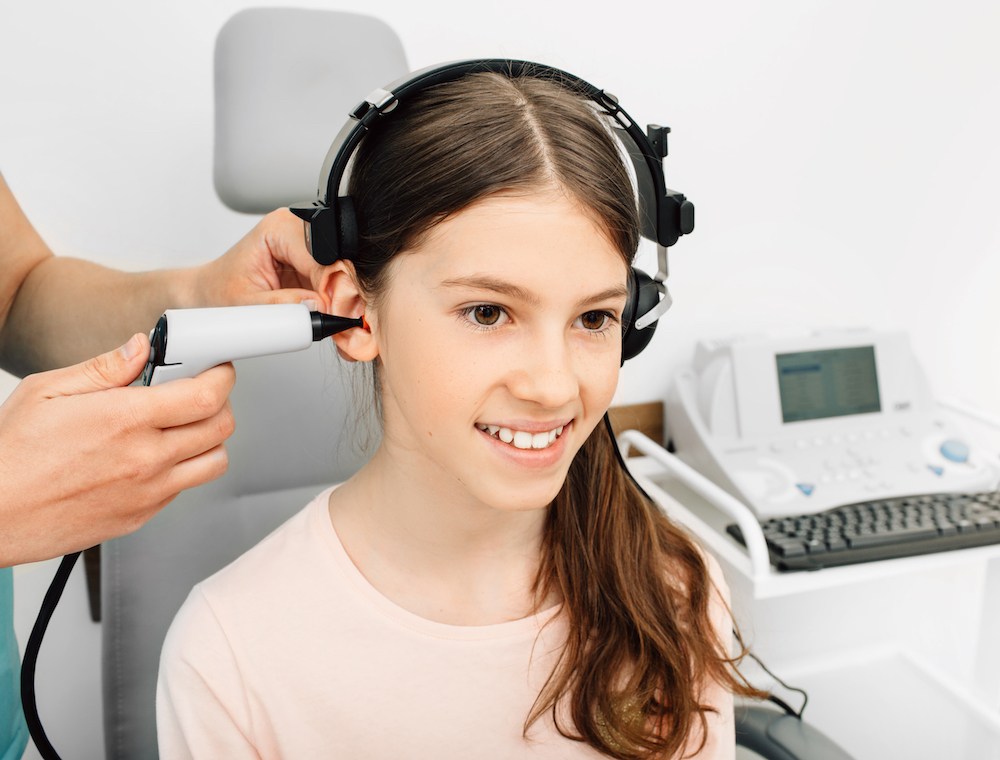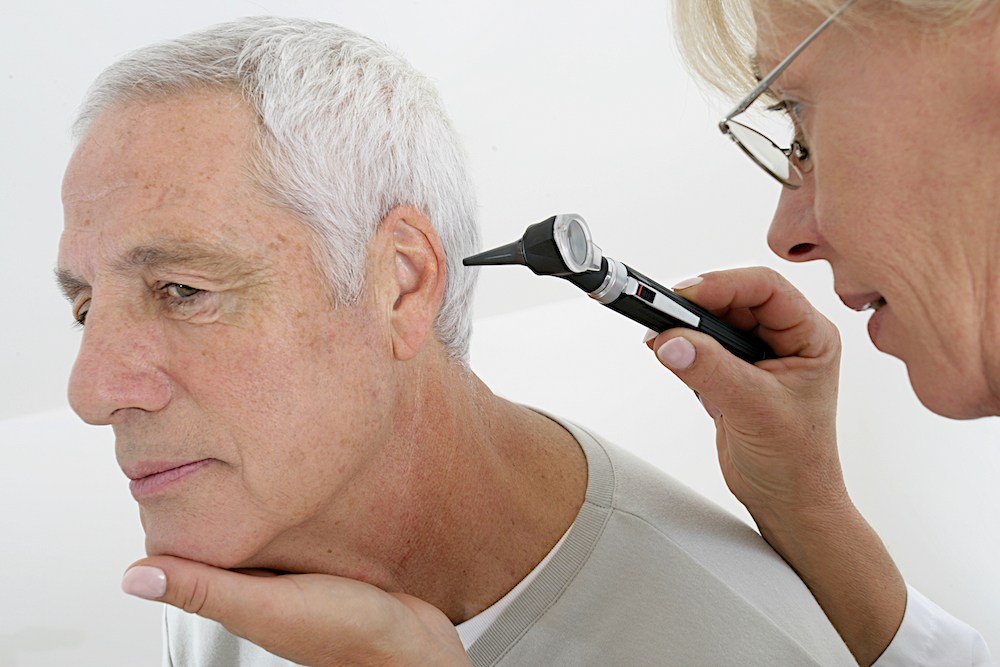The Role of Hearing Tests in Preventative Health Care
Most of us are used to scheduling annual checkups for our vision, dental

By: admin | August 28, 2024
Hearing loss can impact numerous areas of your life, from bonding with family and friends to presenting at work meetings. That’s why hearing aids are vital in helping you stay connected with the world around you. But what if this essential device gets wet? Water and electronics don’t mix well, and your hearing aid is no exception. From sudden rainstorms to accidental drops in the sink, knowing how to react when your hearing aid meets water can help preserve its functionality. The actions you take right away can potentially save your device from permanent damage. By following these steps, you can protect your investment and minimize any disruption to your daily life.
Recognizing the value of your hearing aid goes beyond its price tag. It’s about acknowledging the gateway it provides to a world filled with sounds, conversations and connections that you might otherwise miss. This device is not just a piece of technology; it’s an investment in your quality of life.
Once you understand this value, the importance of taking care of your hearing aid becomes clear. Just as you would care for a cherished heirloom or a valuable piece of equipment, your hearing aid deserves the same level of attention. After all, it’s the key to enriching your daily experiences and interactions.
Now, let’s focus on how water affects your hearing aid. Whether it’s from a sudden Water can cause significant problems for hearing aids, primarily due to the delicate electronic components housed within these devices. When water seeps into a hearing aid, it can disrupt the intricate circuitry, leading to a variety of issues. One of the most immediate effects is a distortion in sound quality. Water can interfere with the microphones and speakers, causing the hearing aid to produce muffled, unclear or crackling audio, making it difficult to hear and understand conversations.
In addition to sound distortion, water can cause the internal components of a hearing aid to short-circuit. This can lead to unpredictable behavior, like the device turning on and off intermittently or not powering on at all. The batteries can also be affected by moisture, leading to a rapid drain or complete failure, further compounding the issues caused by water exposure.
Over time, repeated exposure to water can lead to corrosion within the hearing aid. Corrosion of the metal parts inside the device can result in permanent damage, rendering the hearing aid inoperable. Even devices that are labeled as water-resistant can suffer from these issues if exposed to moisture regularly or for extended periods.
Ultimately, water exposure can drastically reduce the lifespan of a hearing aid and impair its ability to function properly. The sensitive technology inside these devices is not designed to withstand significant moisture, and even a small amount can cause a range of problems that may require professional repair or replacement.
Your hearing aid can encounter water in various ways. Everyday activities like showering or washing your face can inadvertently expose your device to moisture. Outdoor activities, like jogging in the rain or gardening, also pose a risk, especially if you forget to remove your hearing aid beforehand. Even high humidity levels can cause condensation within the device. Here are some common situations where your hearing aid might get wet:
If your hearing aid gets wet, swift action is key. First, turn off your device and remove the battery. This step can help prevent further damage to the internal electronics. Then, gently blot it with a soft, dry cloth to remove as much moisture as possible. Avoid using heat or a hairdryer as this could cause additional damage to your hearing aid. Your actions in these initial moments can significantly influence the outcome for your device.
Have you ever wondered about the role of batteries in a wet hearing aid? They play a vital part, and understanding their function could save your device from further damage.
When your hearing aid gets wet, one of the first things you should do is remove the battery. Why? Because batteries are the powerhouse of your hearing aid. They energize all its functions and, like any other electronic device, water can cause them to short circuit. This could lead to more severe damage inside your hearing aid.
Additionally, batteries themselves can get damaged when exposed to moisture. A wet battery may not work correctly or might stop working altogether. So, if your hearing aid gets wet, along with drying out the device itself, you should also take care to dry out or replace the battery as needed. This step can be crucial in getting your hearing aid back up and running effectively.
A soaked hearing aid needs immediate attention, and the right drying method can make a significant difference. Some methods are more effective and safer than others.
One popular method is using a hearing aid dehumidifier. These devices remove moisture by circulating dry air around your hearing aid. Another option is to use uncooked rice or silica gel packets, both known for their excellent moisture-absorbing properties. Simply place your hearing aid in a bowl with either of these substances overnight, and they should help draw out the moisture. Swift action combined with the right drying technique can help save your hearing aid from permanent damage.
After your hearing aid has taken an unexpected swim, a dehumidifier can be a real lifesaver. This useful device works by removing moisture from your hearing aid, helping to prevent potential damage.
Using a dehumidifier is simple and straightforward. You place your wet hearing aid inside the device and let it work its magic. Over several hours, the dehumidifier will extract the moisture trapped inside your hearing aid. This method is not only effective but also safe for your device, making it an excellent option for salvaging a wet hearing aid.
Knowing when to seek professional help for a wet hearing aid is essential, especially if you’ve already taken basic steps to dry the device at home. While some moisture exposure might be manageable, certain signs indicate that it’s time to consult an audiologist.
One of the clearest signs is if the hearing aid exhibits unusual behavior after getting wet. This could include distorted sound, like crackling or muffling or if the device starts working intermittently, turning on and off unexpectedly. These issues suggest that moisture has infiltrated the internal components, and professional intervention is necessary to prevent further damage.
Another red flag is if the hearing aid fails to power on after it has dried. If the device remains unresponsive despite your efforts to remove the moisture, it’s likely that the water has caused significant damage that requires expert repair.
You should also seek professional help if you notice any visible corrosion or discoloration on the hearing aid’s components. Corrosion is a sign that moisture has penetrated deep into the device, potentially leading to long-term problems if not addressed promptly.
Knowing your warranty and insurance options for water damage is like having a safety net for your hearing aid. This information can provide peace of mind, knowing that even in the event of accidental water exposure, there are solutions available to help protect your investment.
Warranties often cover various forms of damage, including those caused by water. It’s important to read through the details of your warranty when you purchase your hearing aid. Knowing what is covered can save you from unexpected costs and ensure that you get the necessary repairs or replacements.
Insurance can also be a valuable tool in safeguarding against water damage. Some insurance policies specifically cover hearing aids, providing coverage for accidental damage, loss or theft. Just as you would insure other valuable items in your life, considering insurance for your hearing aid is a smart decision that could save you stress and money in the future.
Keeping your hearing aids dry is essential for their longevity and performance. Here are some practical tips to help you avoid moisture-related issues. Always remove your hearing aids before showering, swimming or any activity that might expose them to water. Also, consider using a hearing aid dehumidifier at night to eliminate any moisture that may have accumulated during the day.
Avoid storing your hearing aids in humid places like bathrooms or kitchens. Instead, choose a cool, dry location where they are less likely to encounter moisture. If you’re exercising or out in hot weather, consider using a sweatband to prevent sweat from reaching your device.
These small steps can go a long way in protecting your valuable investment and ensuring that it continues to provide you with the quality of sound you deserve.
Have you considered the possibility of water-resistant hearing aids? These devices offer enhanced protection against moisture, making them a suitable option for those who frequently encounter water in their daily activities. However, it’s important to note that even waterproof hearing aids are not meant to be fully immersed in water. While they provide more protection than standard water-resistant models, they shouldn’t be treated as fully waterproof.
Water-resistant hearing aids can handle light moisture, like sweat or rain, but they are not designed for submersion. Similarly, waterproof hearing aids can tolerate brief exposure to water, like during an accidental splash, but they should not be immersed. Both types offer added protection, helping to minimize moisture damage and maintain your connection to the world of sound.
Now that you’re equipped with the knowledge of what to do when your hearing aid gets wet, it’s time to prepare for future occurrences. Being proactive and prepared involves always having a dry cloth and a safe place to store your hearing aid on hand, should it get wet.
Consider investing in a hearing aid dehumidifier. This useful tool can be a real lifesaver in situations where your device has been exposed to moisture. Swift action is key, and having these items readily available can make all the difference.
And let’s not forget about prevention. By taking simple steps like removing your hearing aid before showering or exercising, you can avoid many situations where your device might get wet. Being mindful of these actions is an empowering way to protect your investment in your hearing health.
Living with hearing loss can be difficult, and a wet hearing aid can seem like a major obstacle. But you’re not alone on this journey. At Affordable Audiology & Hearing Service, we’re here to help you every step of the way.
If your hearing aid gets wet and you’ve followed the steps we outlined and are still experiencing issues, don’t hesitate to reach out for professional assistance. Our audiologists are ready to provide expert guidance and services to ensure your device is back in optimal working condition as soon as possible.
For our Oshkosh location, please call (920) 267-5220 or for our Fond du Lac location dial (920) 933-4488. We look forward to assisting you with any concerns or questions about your hearing aids.
Remember, prevention is always better than cure. So consider adopting habits that keep your device dry and safe from moisture damage. And should the unexpected happen – know that we are just a phone call away, ready to assist you on your path towards uninterrupted sound quality.
Tags: hearing aid repair, hearing aid services, hearing aid styles

Most of us are used to scheduling annual checkups for our vision, dental
By: admin | October 20, 2025

Summer tends to be louder than the rest of the year. You’re probably
By: admin | July 29, 2025

Hearing testing has come a long way from the basic beep tests many people
By: admin | June 20, 2025
